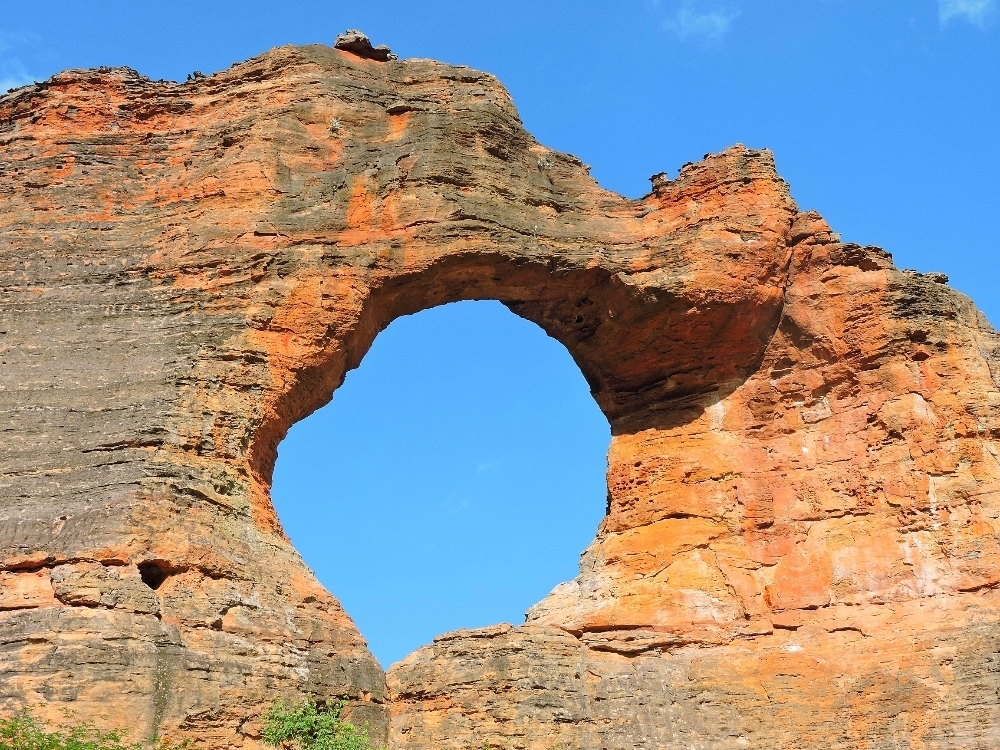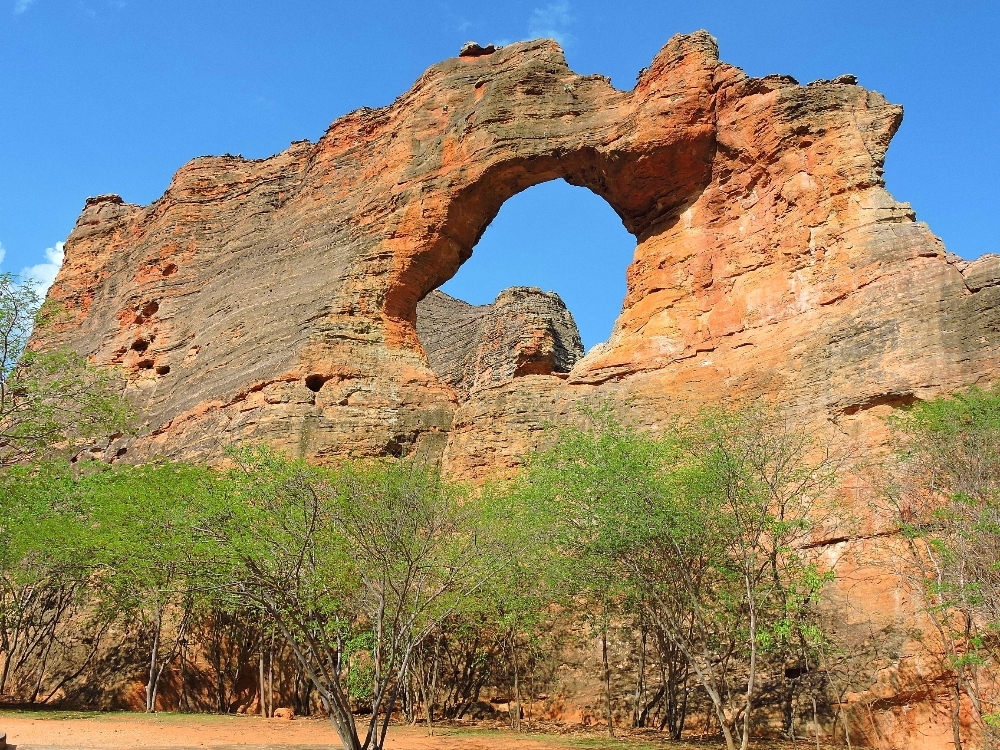My recent route through Brazil has been more indirect, and somewhat less-than-ideal from a cycling perspective, than it otherwise could have been. This was caused by my desire to see one particular World Heritage Site, and two special birding locations, in northeastern Brazil, none of which are located anywhere near the more user-friendly coastal route. The first of those place I encountered was Serra da Capivara National Park, one of Brazil’s nicer, though also one of its more seldom-visited, Sites.
The Site is rather unusual, as it is a National Park that has not been inscribed for its scenic or environmental aspects, but as a Cultural WHS. That is because it is one of the most important archeological sites in South America, providing important evidence that reveals the history of one of the oldest known settled locations on the continent. In addition to excavated artifacts, most of the story is presented to us today by the Site’s excellent galleries of Rock Art. Seeing such images from the ancient past has always been a favorite activity for me, and so there was never really any question that I would include a visit to the Park as part of my route for this Tour.
Of course, the natural aspects of the Park are also impressive. The area contained within the park consists of a collection of relatively low, rounded hills, which are the only significant topography found throughout the broader region. These hills are composed of sedimentary rocks, with a wide variety of aggregate sizes. Between these closely-packed hills are narrow valleys, and even slot canyons, that create cool, damp areas protected from the harsher climate off the surrounding landscape. Seeing those features provided an obvious explanation for why that particular location had been an important site for humans for several millennia.
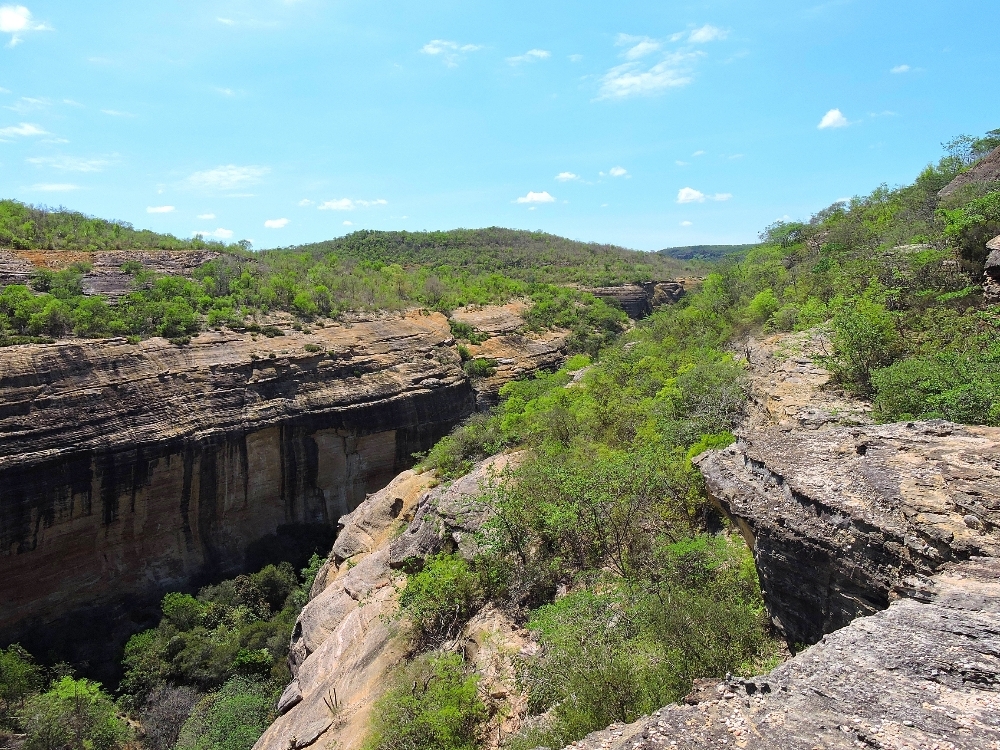
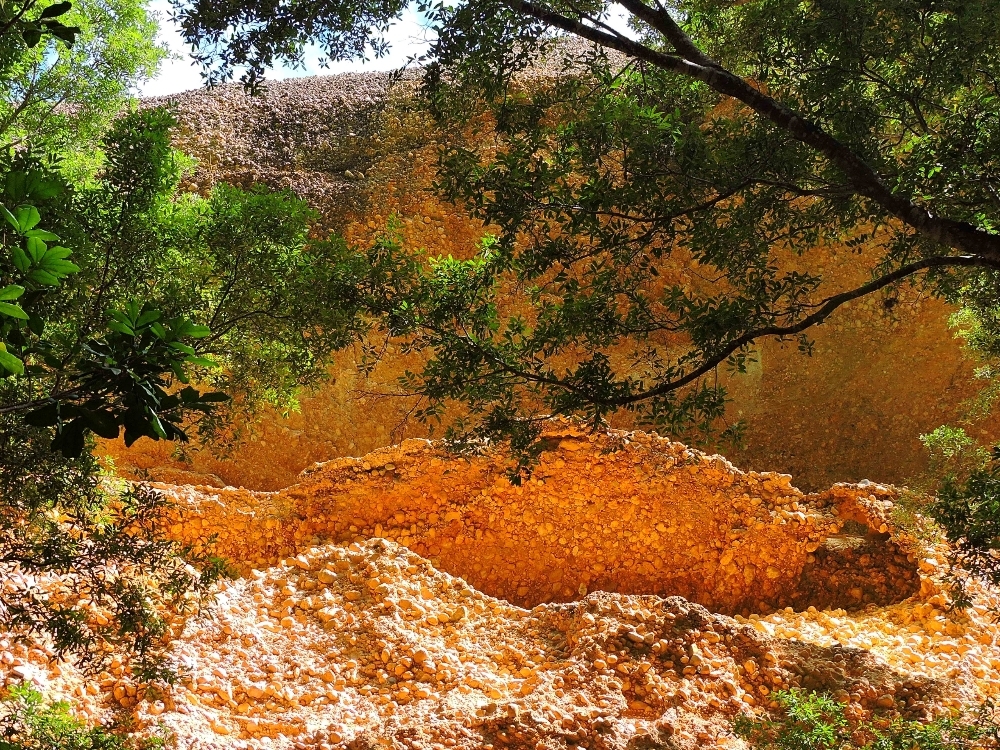
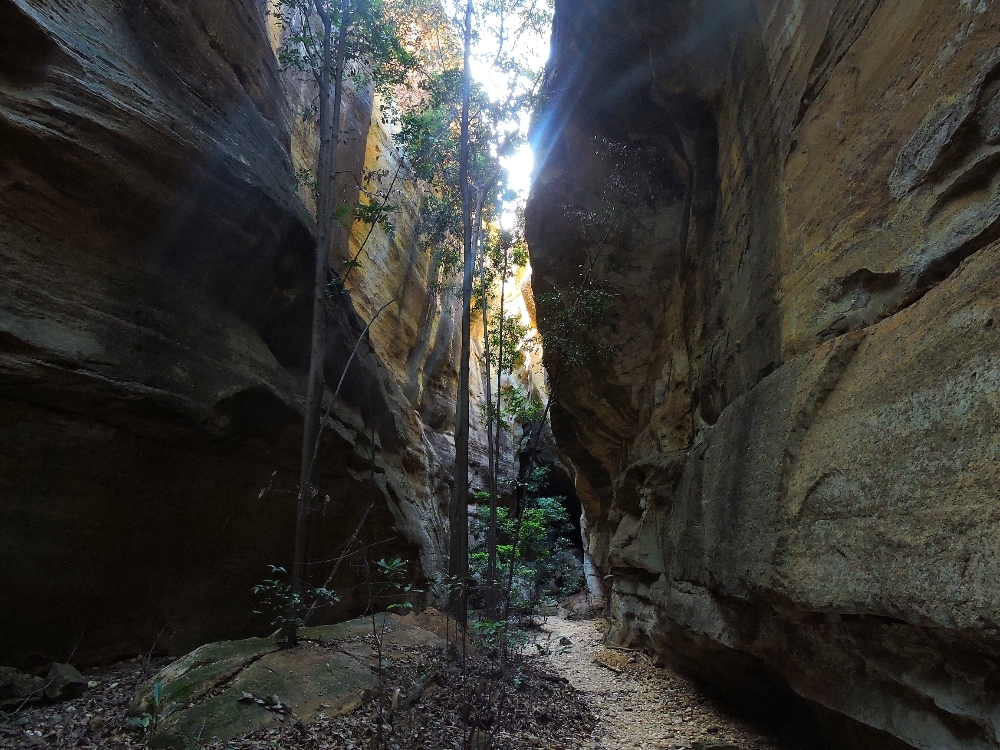
However, it is the Rock Art that provides the most interesting experience for visitors today, and I very much enjoyed seeing the galleries that I was shown, though they were just a small fraction of the entire collection to be found in the Park. In the areas that I was shown, the presentation is excellent, with most of the art seen from wooden walkways that had been installed at the perfect distance from the paintings, far enough away to prevent anyone from trying to touch the surfaces, but close enough so that the paintings’ details are clearly visible. Right away, I noticed a feature that was distinctive compared to other pictograph sites I have seen. With a relative lack of nice, smooth cliff faces in this area, the creators utilized whatever surfaces were present to frame their art. This included using the smooth surface of fist-sized river stones embedded in the rock as a canvas
for painting tiny animals.
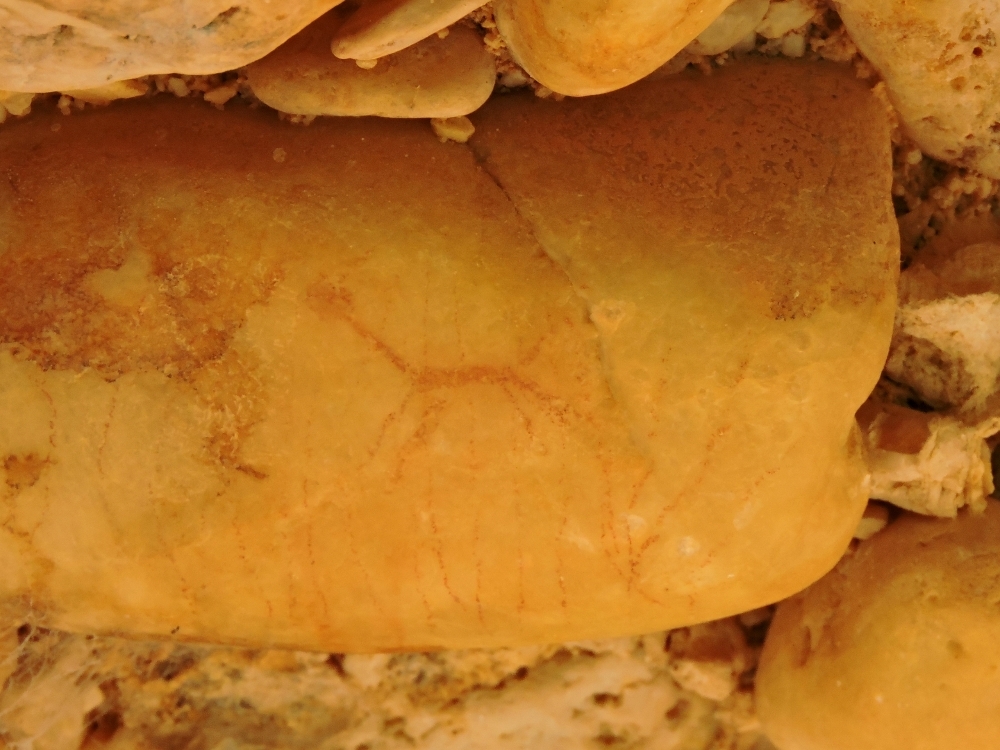
Another interesting example is the use of concave surfaces left when chunks of rock had previously spalled off of the cliff wall as a frame for a particular scene.
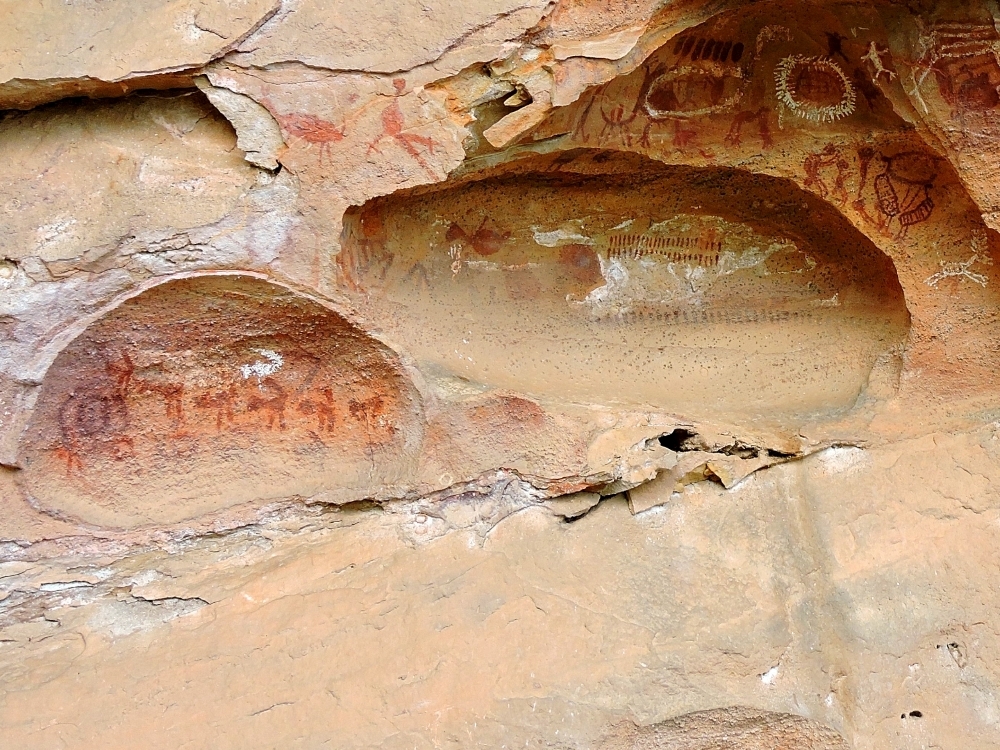
The use of a silver-gray pigment, made from gypsum, was an additional feature I have not previously seen. It is included in this panel as part of the lizard, and its associated figures, and together with the more common white, and red and yellow ochres, typically found elsewhere, makes a four-color painting.
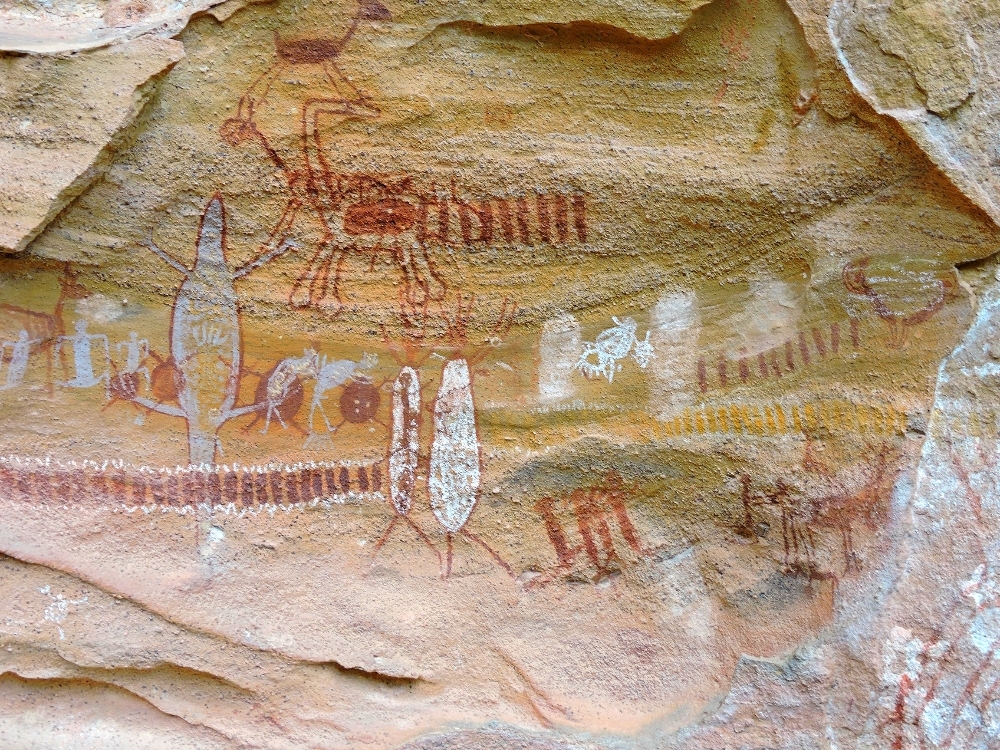
Animals feature prominently, as they often do in pictograph sites around the World, but perhaps even more so at this location. In fact, several animal images are thought to represent megafauna species that went extinct at the end of the Pleistocene Age, probably around the same time that humans arrived in this area. The image below, seems to be such a case, but I think the second image looks more like it contains a capybara and a tapir, two extant species found in modern South America.
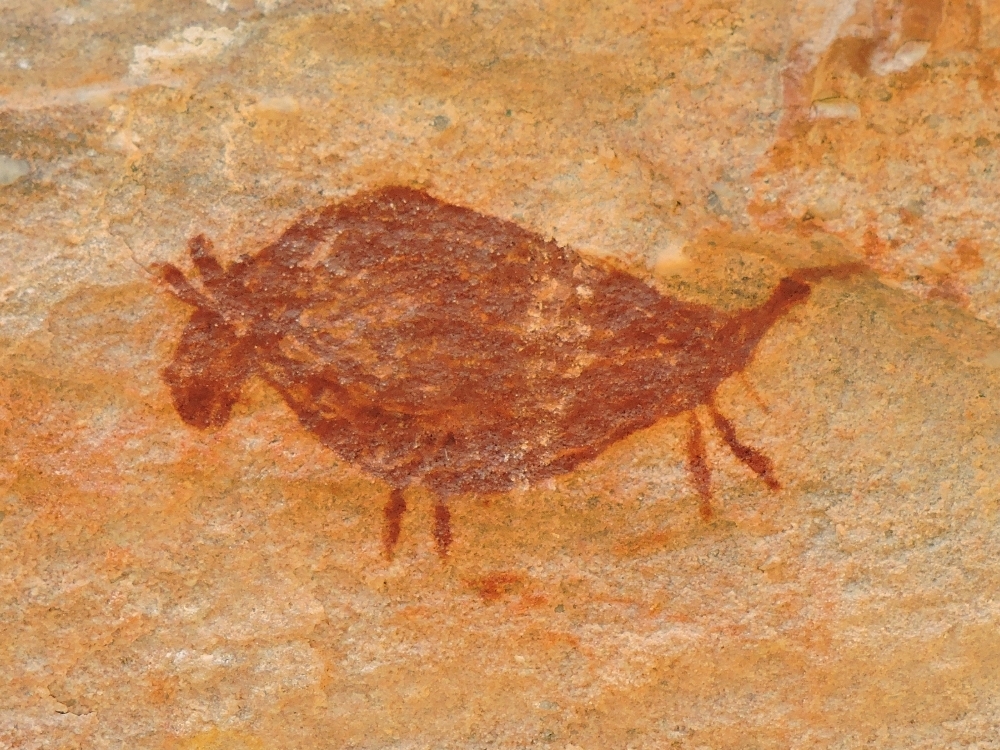
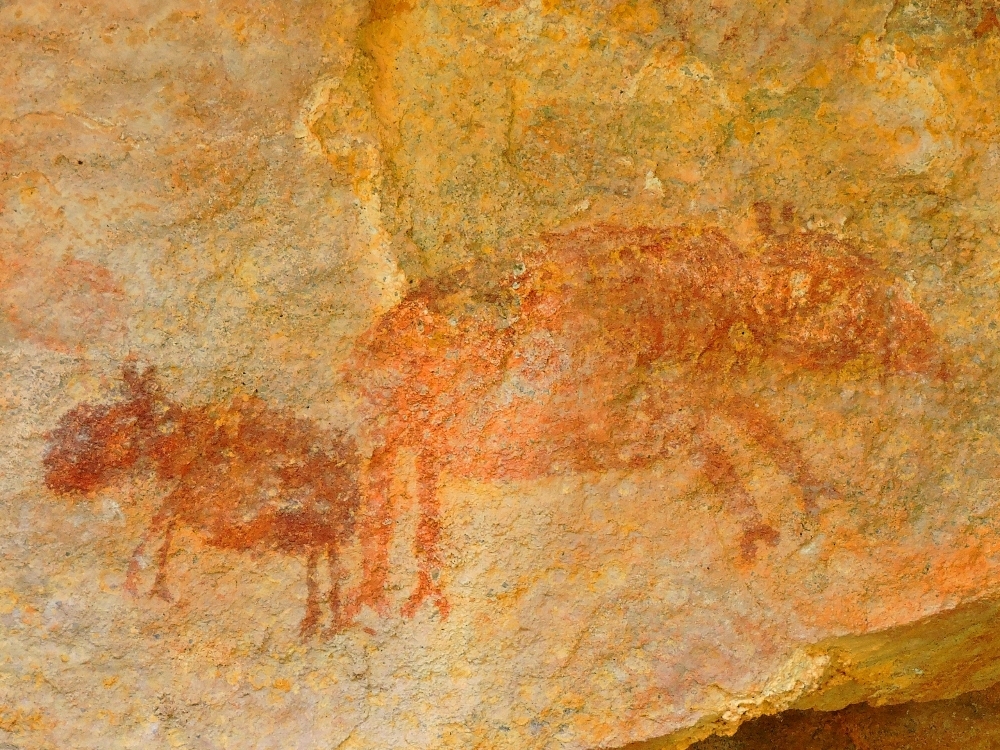
Other panels are harder to interpret, such as this one, which shows many ambiguous human-like characters, but also a few rheas, and other creatures.
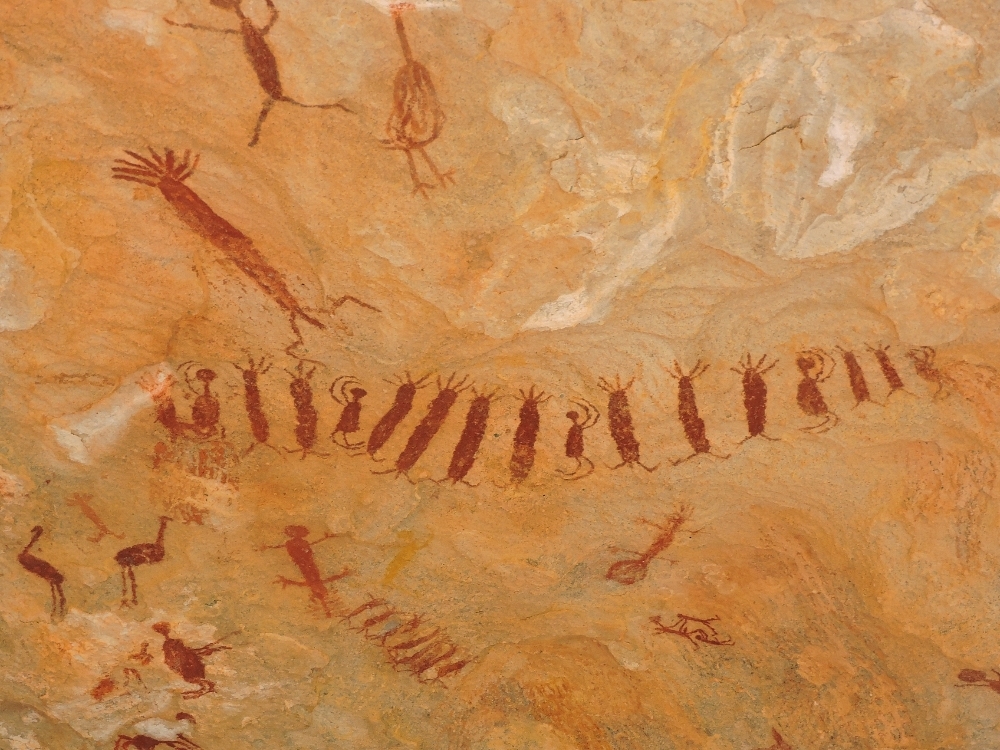
Here are more rheas, or possibly siremas. Either way, the people who once lived here certainly appreciated birds.
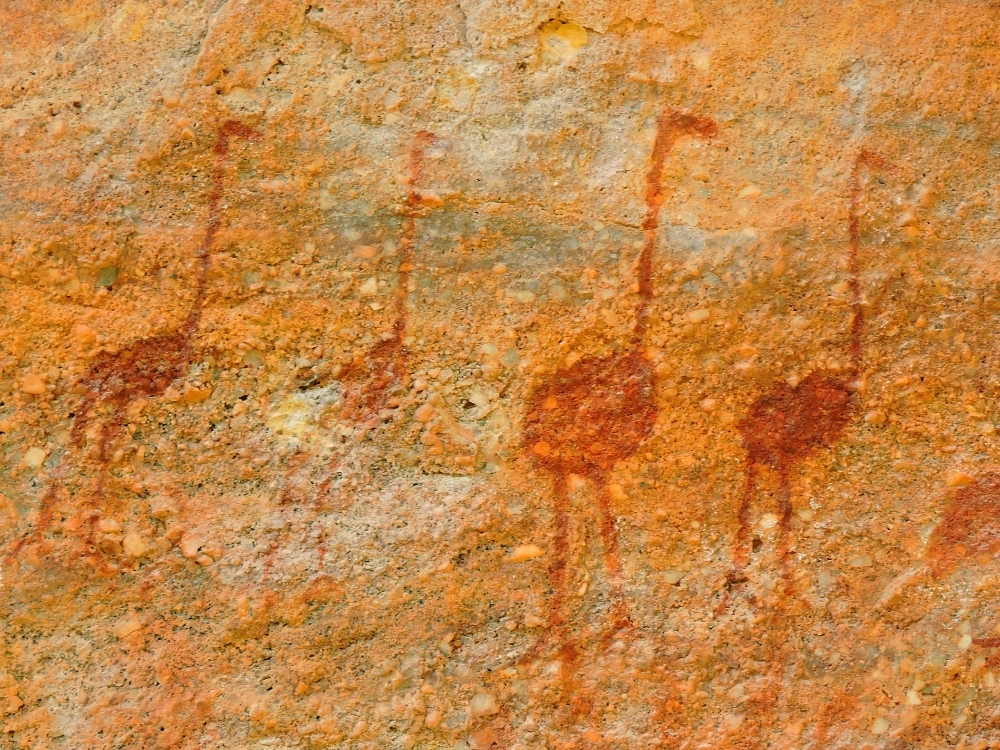
My visit ended at one of the Park’s famous landmarks, Pedra Furada, the holed stone,
which provided a nice vista to end the day. In this case, one day was all that I had available for my visit, but that may not have been enough to fully appreciate this impressive Site.
